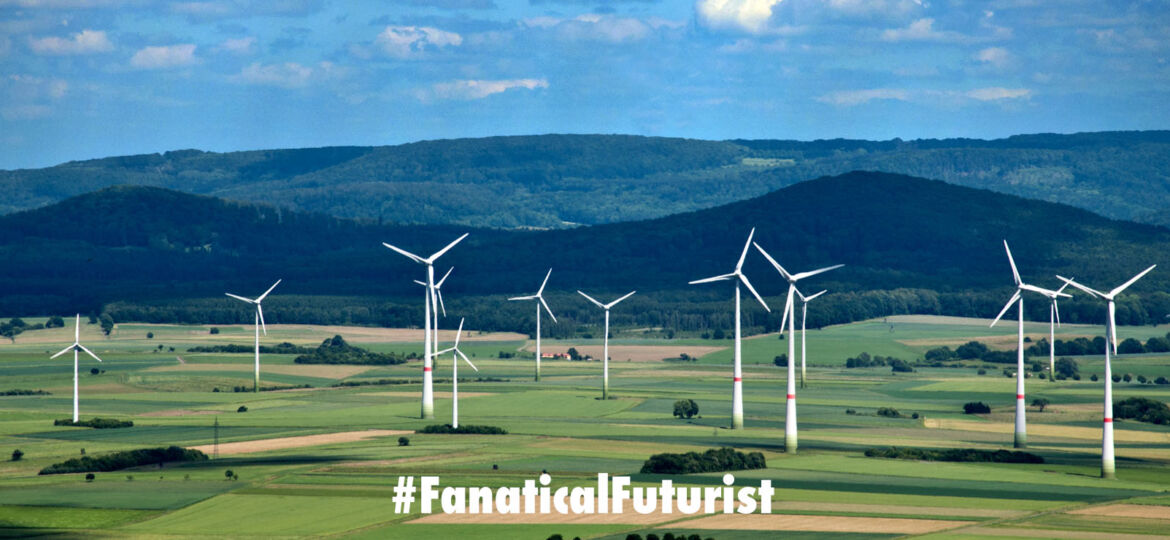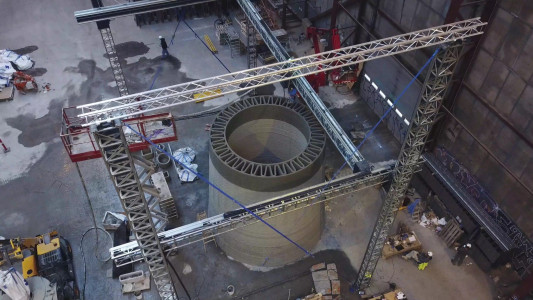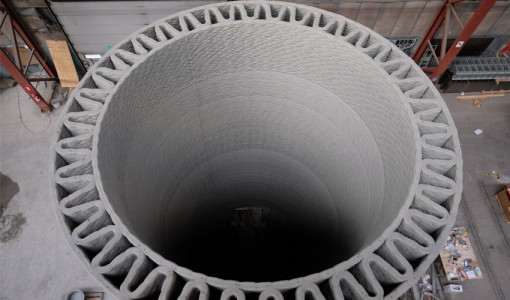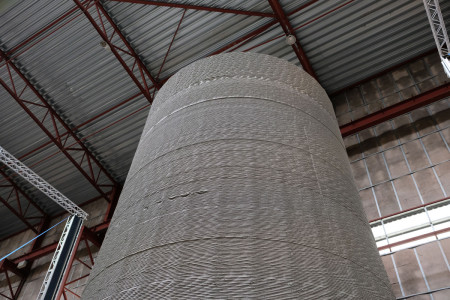
WHY THIS MATTERS IN BRIEF
The size of wind turbines are limited by the width of the roads they’re transported on, but now GE is paving the way for wind turbines that are truly massive.
 Interested in the Exponential Future? Join our XPotential Community, connect, watch a keynote, or browse my blog.
Interested in the Exponential Future? Join our XPotential Community, connect, watch a keynote, or browse my blog.
Renewable energy installations are on a tear globally with new mega installations popping up all the time and record after record tumbling, with now more than 1 Trillion watts of installed renewable energy generation in place around the world and much more coming online. Some of those mega installations though are wind turbine installations, and unlike solar farms that can be assembled on site and are relatively easy to build wind turbine towers, which themselves have broken size records recently, are usually limited to a height of under 100 meters. This is because they are typically built in steel or precast concrete, heavy materials that have to be transported by road to the turbine’s construction site, and needless to say when it comes to the amount of electricity they can generate size matters.
Now, a collaboration between GE Renewable Energy, COBOD and LafargeHolcim, announced last week, will seem them co-develop a method for on-site building of optimized 3D printed concrete bases, that will be able to harness more of the winds energy by reaching record heights up to 200 meters.
Courtesy: GE
The three partners are set to undertake a collaboration that will span several years in order to develop this innovative solution, GE explained in a press release.
Traditionally, wind turbines are built in steel or precast concrete. This limits them to a height of 100 meters because the width of the base cannot exceed the 4.5-meter diameter that allows it to be transported by road — without prohibitive additional logistics costs.
The new method by the three-company partnership allows for the printing of a variable height base directly on-site with 3D-printed concrete technology. This is a neat method for working around the problem, that should allow the construction of towers up to 150 to 200 meters tall.
Not only will the 3D printing technique massively increase renewable energy production, it will also lower the Levelized Cost of Energy (LCOE) and lower construction costs.
Ultimately, the three organizations will produce a wind turbine prototype with a printed pedestal and a production-ready printer and materials range to scale up production.
GE Renewable Energy will provide expertise related to the design and manufacture of the turbine going forward, COBOD will bring its expertise robotics automation and 3D printing and LafargeHolcim is developing the specially-made concrete material used for the turbine.
“With our ground breaking 3D printing technology combined with the competence and resources of our partners, we are convinced that this disruptive move within the wind turbines industry will help drive lower costs and faster execution times, to benefit customers and lower the CO2 footprint from the production of energy,” Henrik Lund-Nielsen, founder of COBOD International A/S, explained in the press release.
The first prototype, a 10-meter high tower pedestal, has already been successfully printed. It was printed back in October 2019 in Copenhagen and was built as part of the three companies’ effort to generate more renewable energy per turbine.




















[…] GE has plans for even larger wind turbines in the future after they recently perfected a way to 3D print the bases of their turbines, and bearing in mind that these monsters are already 85 storeys tall one can only […]